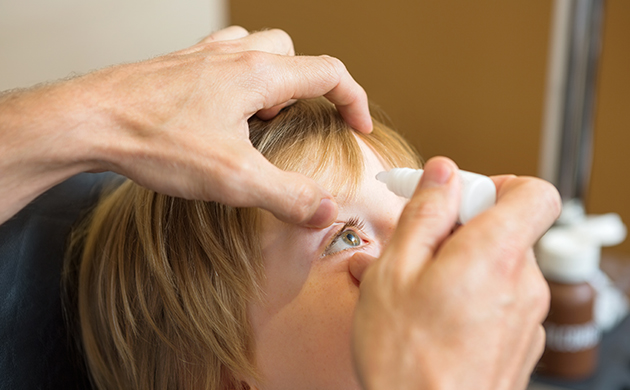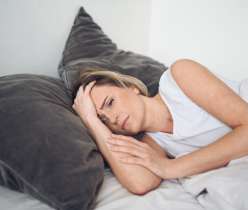Regular doctor visits are about monitoring a child’s growth, providing necessary treatments, and ensuring good sleep. Yet, eye care is another component of preventive wellness for children that often goes overlooked. So, does your little munchkin require a normal eye exam? If so, when should be the right time to have one? Here is everything a parent need to know about the importance of eye checkup in children.
Why do children need eye exams?
Like adults, children should also undergo regular eye checkups. Getting the best eye care for your child is very important. Identifying eye problems and treating them early enables children to continue to lead healthy lives. The initial step to protecting your child’s vision is to have them tested at birth. A regular eye checkup for a newborn can help detect various issues, such as juvenile cataracts or refractive errors. Every child should have a normal eye check-up between 3 and 5 at least once. After that, they should have another eye exam around age 6 or 7 after they have started, depending on their requirements. These eye checkups are important as vision issues may have gone undetected earlier. Best eye check-up near me? Such surfing results will provide you with details to the eye specialist. Your regular healthcare provider can also give you an idea about eye check-up costs.
Regular vision checkups can also detect the onset of common vision issues such as long-sightedness, short-sightedness, amblyopia (lazy eye), and astigmatism. However, if detected early, these eye problems can be treated with simple techniques such as glasses or patching. If left untreated, even these vision problems among children may become more severe and need intensive care.
Good eyesight in children is essential for classroom success at school, and regular eye exams ensure that your child has no problems reading the board exam. Kids progress through learning and studying at school. Regular eye exams also help ensure your kid’s vision develops properly as they age.
How to know if your child requires an eye exam?
Pay attention to your child’s behaviour and observe symptoms indicating underlying eye problems. If you notice signs of eye problems, scheduling an eye test is wise. Here are some important signs to look out for:
-
- Closing one eye while reading or writing
- Complaining about headaches, eye strain, or double vision during reading activities
- Tilting head while reading
- Sitting very close to watch Television or a computer screen
- Skipping words or lines while reading
- Squinting or rubbing eyes more than usual
- Problem focussing on moving objects with eyes
- Trouble reading or learning at school
- Complaining of eye irritation, burning sensation or watery eyes
What to expect from a child’s exam?
Eye care specialists look for functional qualities, focusing skills, colour vision, and depth perception during an infant eye exam. They will conduct specific tests for eye development, such as the pupil response test, which shows how your kid’s pupil responds to light. The eye care professional will also check your baby’s ability to focus on objects as they move; this skill usually develops after three months in babies. As a child develops, eye exams become more complex. By the time they enter preschool, eye checkups can encompass tests for colour vision, lazy eye, visual acuity, and overall ocular health.
Since children undergo many developments that call for visual skills, such as reading and writing, eye tests can help determine problems that could contribute to developmental and educational delays if left unaddressed. Also, after preschool, children should continue to receive routine eye checkups for vision improvement and ocular health.
Diabetic eye exam Vs regular eye exam
While kids with uncontrolled blood sugar levels are likely to develop diabetic retinopathy, and those with controlled diabetes are still at risk. This is enough to get an annual eye exam for early detection of the disease and increased treatment results. A standard eye exam will not detect diabetic retinopathy, but during a diabetic eye exam, your child’s eye care specialist will specifically focus on the health of your child’s retina and the integrity of the blood vessels in one’s eye.
How to help your child help their specs?
So, after your child’s eye exam, you have discovered they need glasses; what’s next? Well, you are lucky if your child will be excited to receive glasses and adapt to the change quickly. But for many parents, making their child accept this change is difficult. Many kids get nervous about looking different from their friends and don’t want to wear them. Fortunately, there are several things you can do to help your child.
-
- Give them freedom in choosing the glasses; this way, they will wear their favourite colour daily.
- It helps if a parent wears glasses, but if nobody in your family does, provide your child with popular personalities or significant people who wear glasses. Perhaps a favourite teacher, an intelligent neighbour, a well-settled family friend, a favourite TV character, singer, actor, or athlete.
- Make sure what your kid has chosen fits them properly. Kids don’t like to wear glasses that cause discomfort that pinch or keep slipping down from their noses.
- Initially, you can allow your kid to wear glasses at times, like while reading, then increase the time they wear glasses.
- Offers a lot of praise and ask their teachers and other caregivers to encourage and support your child to wear their glasses.
Conclusion
The prevalence of ocular disease among children is not uncommon. It is always important to seek medical advice on vision problems and eye health. If you notice any possible vision problems in your child, immediately schedule an eye exam with an eye care specialist. Before receiving treatment, it is always a good idea to have a complete medical history available for the eye care specialist to review. This step ensures your child receives the best possible eye care.




